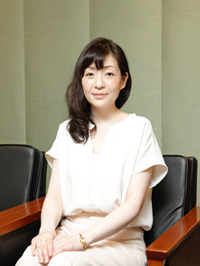Sayaka Murata’s Utopias Violence and the Structure of Normality David Shrigley & Teppei Kaneuji in dialogue with Murata’s worldview
This is why it makes little difference when the first voice of madness insinuated itself into Nietzsche’s pride, into Van Gogh’s humility.
There is no madness except as the final instant of the work of art
― Foucault, Michel, Madness and Civilization: A History of Insanity in the Age of Reason, trans Richard Howard. Pantheon Books, 1965, p.288.
The exhibits consist predominantly of works, including new works, by David Shrigley and Teppei Kaneuji inspired by three novels by Sayaka Murata: Shometsu Sekai (Dwindling World), published in December 2015 by Kawade Shobo Shinsha; Convenience Store Woman, published in July 2016 by Bungei Shunju; and Seimeishiki (Ceremony of Life), published in October 2019 by Kawade Shobo Shinsha. Drawing from Convenience Store Woman’s declaration that “a convenience store is a world of sound,” one room at the venue presents “Convenient,” a new composition by sound artist Ken Ikeda that takes its inspiration from the novel.
Takayo Iida is director of the Sgùrr Dearg Institute for Sociology of the Arts
-
Sayaka Murata "Untitled" ,Production Year Unknown -
Sayaka Murata "Untitled" ,Production Year Unknown
-
David Shrigley "Untitled",2021 -
David Shrigley "Untitled",2021
-
Top:Teppei Kaneuji / tower (MOVIE) / 2009
Bottom:Teppei Kaneuji / Hard Boiled Daydream (Wall Paper / Ocean) #4 / 2021 -
Teppei Kaneuji / Ghost in the Liquid Room(Sports pattern)/ 2010
In asserting that “the world is just a vivid mirage” (Ceremony of Life), Sayaka Murata is talking to people hiding in the underground of a mental world isolated from society, bringing them a message of hope and the strength to live.
Takayo Iida is director of the Sgùrr Dearg Institute for Sociology of the Arts

Sayaka Murata
-

Murata was born in 1979 in Chiba Prefecture. Her first novel, Jyunyu (Breastfeeding) was awarded the Gunzo Prize for New Writers in 2003. In 2009, her novel Gin Iro no Uta (Silver Song) won the Noma Literary New Face Prize. In 2013 her novel Shiro-iro no Machi no, Sono Hone no Taion no (Of Bones, Of Body Heat, Of Whitening City) won the Mishima Yukio Prize, and, in 2016, her novel Convenience Store Woman won the Akutagawa Prize. Her other books include Tadaima Tobira (A Welcoming Door), Satsujin Shussan (The Murder Births), Shometsu Sekai (Dwindling World), and Seimeishiki (Ceremony of Life). Photo:Sayaka Murata ©Bungeishunju Ltd.
David Shrigley
-

David Shrigley was born in 1968 in Macclesfield, UK. He is based in Brighton, UK. Shrigley is best known for his distinctive drawing style and works that make satirical comments on everyday situations and human interactions. Whilst drawing is at the center of his practice, the artist also works across an extensive range of media, including sculpture, large-scale installation, animation, painting, photography and music. Shrigley consistently seeks to widen his public by frequently operating outside the gallery sphere through activities such as publications and collaborative music projects. Shrigley was a Turner Prize nominee in 2013, following his major mid-career retrospective “Brain Activity” at Hayward Gallery in London in 2012. In September 2016, his monumental sculpture Really Good was unveiled in Trafalgar Square in London for the Fourth Plinth Commission. From 2015 to 2018, the solo exhibition “Lose Your Mind,” organized by the British Council, was held at six locations, including Power Station of Art in Shanghai, China, Storage by Hyundai Card in Seoul, South Korea, Art Tower Mito in Ibaraki Prefecture, Japan, and Instituto Cultural Cabañas in Guadalajara, Mexico. He was also appointed guest director of the Brighton Festival in Brighton, UK in 2018. Shrigley currently has an on-going presentation in The Gallery at the London restaurant Sketch as part of a long-term program. In 2020, Shrigley was awarded an OBE for services to Visual Arts.Photo:Craig Gibson
Teppei Kaneuji
-

Teppei Kaneuji was born in 1978 in Kyoto Prefecture, Japan, and currently lives and works in Kyoto City. He earned a Master’s degree in Sculpture at Kyoto City University of the Arts in 2003, and took part in the exchange program at Royal College of Art, London, UK in 2001 while a student at Kyoto City University. He creates art using a collage-like method that involves a collection of everyday items. He works in a range of media, including sculpture, painting, video, and photography, and has consistently explored proposals for a system of formative art that reveals the relationship between matter and images. Major solo exhibitions include shows throughout the world such as “chelfitsch & Teppei Kaneuji, Eraser Forest” (21st Century Museum of Contemporary Art, Kanazawa, 2020), “Teppei Kaneuji’s ‘ZONES’” (Marugame Genichiro-Inokuma Museum of Contemporary Art, 2016), “Cubed Liquid, Metallic Memory” (Kyoto Art Center, 2014), “Towering Something” (Ullens Center for Contemporary Art, 2013), and “Teppei KANEUJI: Melting City / Empty Forest” (Yokohama Museum of Art, 2009). He has also handled many stage designs and book designs. He did the stage design for “Kaden no youni wakariaenai” (We never understand each other as household electric appliances) produced by Owlspot Theater (2011), “Wakattasan no Cookie,” part of “oishii okashii oshibai” (yummu, funny play) for the 2015 Kanagawa Arts Theatre Kids Program, KAAT (2015-2016), “chelfitsch & Teppei Kaneuji, Eraser Mountain” at KYOTO EXPERIMENT 2019 (2019), and “chelfitsch & Teppei Kaneuji, Eraser Forest” (21st Century Museum of Contemporary Art, Kanazawa, 2020). He also handled the direction of “tower (THEATRE)” (ROHM Theatre Kyoto South Hall, Kyoto Experiment 2017), in which he brought his video work to the stage. Kaneuji is currently exhibiting a site-specific installation for En/trance, a series of long-term projects organized by the Japan Society in New York.Photo: Kotori Kawashima
Sayaka Murata’s Utopias
Violence and the Structure of Normality
David Shrigley & Teppei Kaneuji
in dialogue with Murata’s worldview
- Organizer
- GYRE
- Dates
- August 20 – October 17, 2021 /
Closed : August 23, 2021
- Venue
- GYRE GALLERY / GYRE 3F 5-10-1 Jingumae, Shibuya-ku, Tokyo
- CONTACT
- 03-3498-6990
- Curator
- >Takayo Iida (director of the Sgùrr Dearg Institute for Sociology of the Arts)
- Music collaboration
- Ken Ikeda
- Design
- Nanami Norita
- Design collaboration
- COVA (Taketo Kobayashi, Hikaru Takata)
- Photography collaboration
- Mori Koda
- Installation cooperation
- Haruka Ohta
- Cooperation
- Yumiko Chiba Associates, Kawade Shobo Shinsha, Bungei Shunju, Ricoh Company, Ltd., HiRAO INC